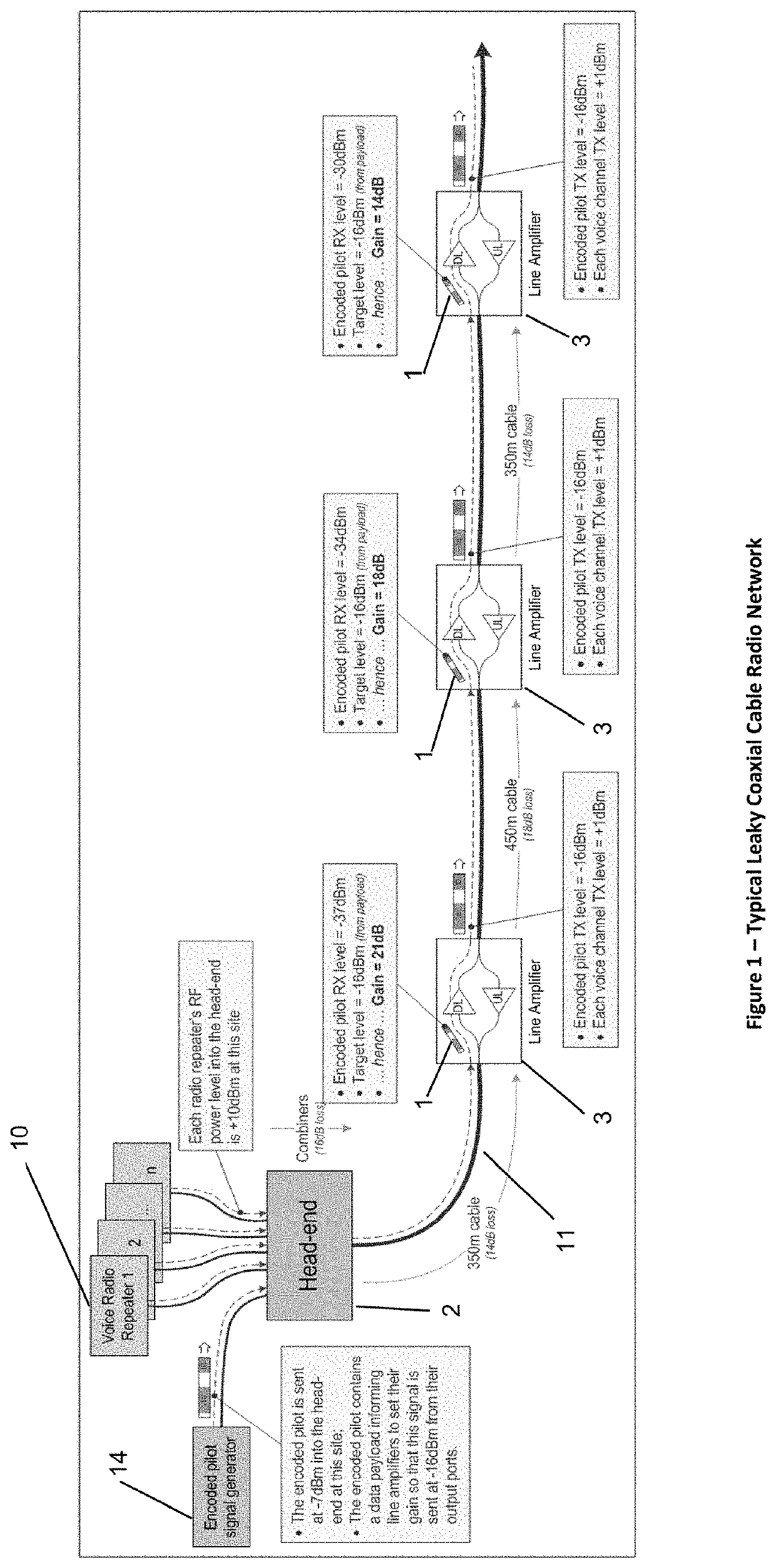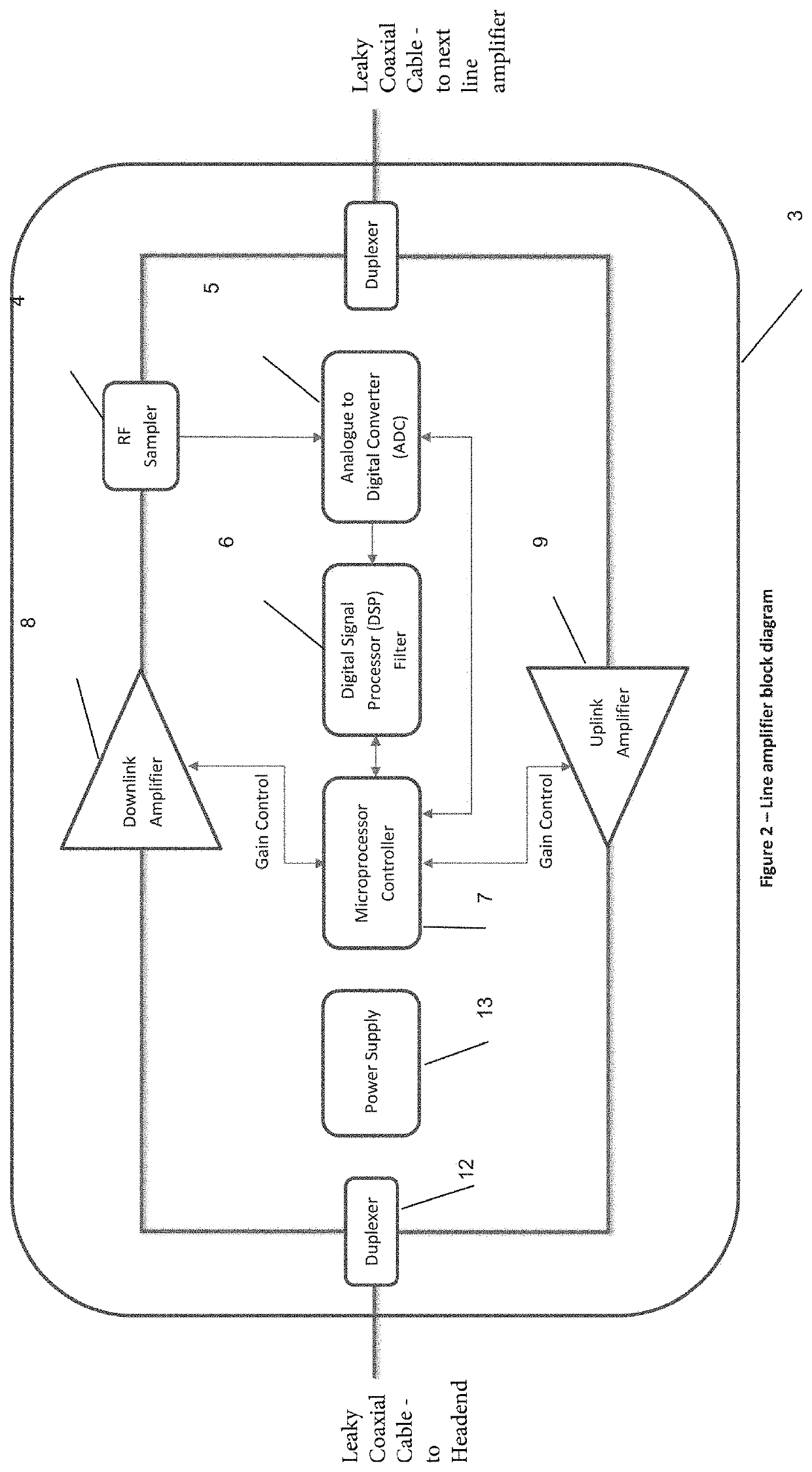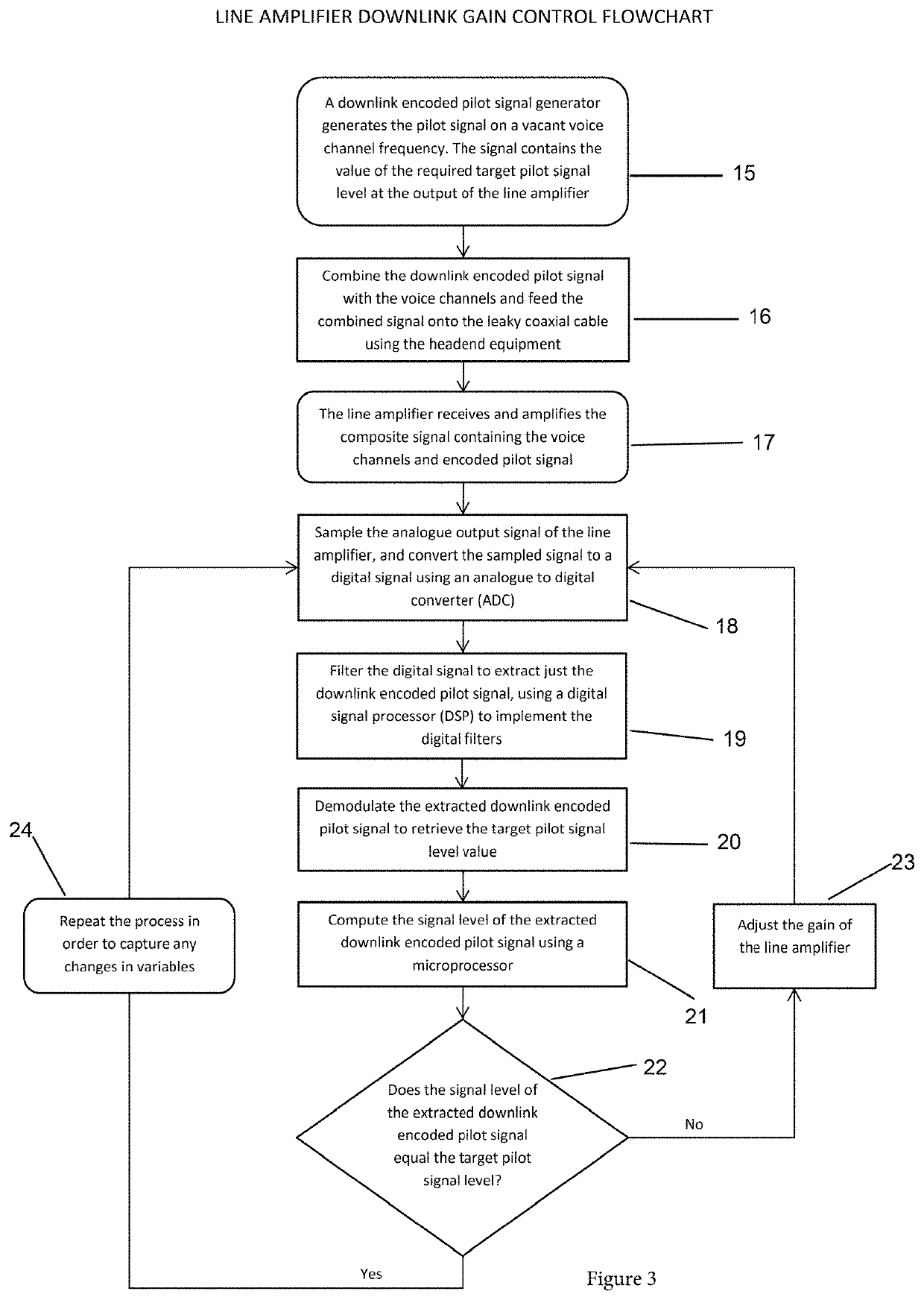Channelised gain control of line amplifiers
a gain control and channelised technology, applied in line-transmission details, repeater circuits, waveguides, etc., can solve the problems of human error in gain setting, significant drawbacks of both methods, and decrease in the intensity of rf signal within the leaky coaxial cable, so as to facilitate the adjustment of gain control
- Summary
- Abstract
- Description
- Claims
- Application Information
AI Technical Summary
Benefits of technology
Problems solved by technology
Method used
Image
Examples
Embodiment Construction
[0063]The following description is presented to enable any person skilled in the art to make and use the invention, and is provided in the context of a particular application and its requirements. Various modifications to the disclosed embodiments will be readily apparent to those skilled in the art, and the general principles defined herein may be applied to other embodiments and applications without departing from the spirit and scope of the present invention. Thus, the present invention is not intended to be limited to the embodiments shown, but is to be accorded the widest scope consistent with the principles and features disclosed herein.
[0064]The invention describes a novel approach to achieving line amplifier gain control without the disadvantages of both manual and traditional automatic gain control techniques. The following description refers to improvements to a typical leaky coaxial cable radio network deployment as depicted in FIG. 1.
[0065]In a preferred embodiment, a lo...
PUM
 Login to View More
Login to View More Abstract
Description
Claims
Application Information
 Login to View More
Login to View More - R&D
- Intellectual Property
- Life Sciences
- Materials
- Tech Scout
- Unparalleled Data Quality
- Higher Quality Content
- 60% Fewer Hallucinations
Browse by: Latest US Patents, China's latest patents, Technical Efficacy Thesaurus, Application Domain, Technology Topic, Popular Technical Reports.
© 2025 PatSnap. All rights reserved.Legal|Privacy policy|Modern Slavery Act Transparency Statement|Sitemap|About US| Contact US: help@patsnap.com



